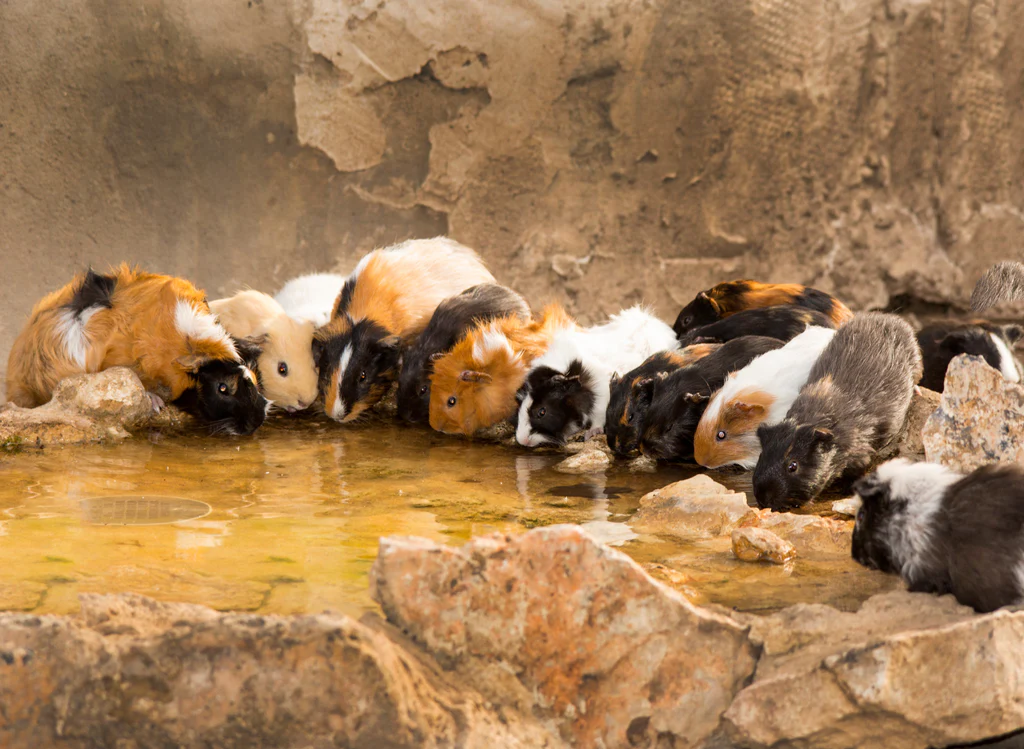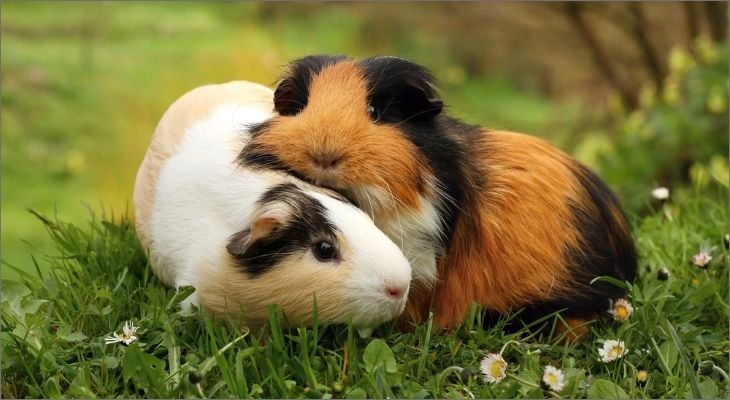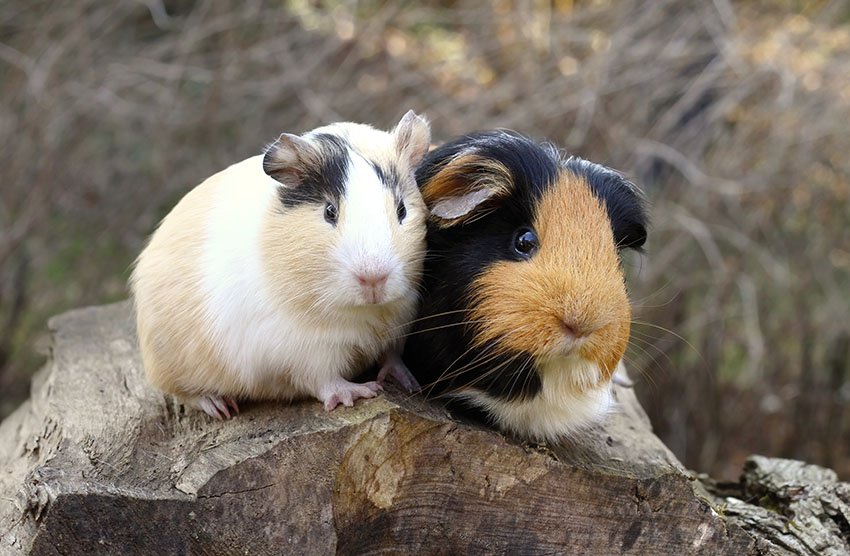Where Do Guinea Pigs Come From: Unraveling the Evolution and Popularity of Guinea Pig Breeds
Brief overview of guinea pigs as popular household pets
Where Do Guinea Pigs Come From?
Guinea pigs, also known as cavies, have become cherished household companions in many parts of the world. These small rodents are adored for their gentle nature, charming personalities, and relatively low maintenance.
Importance of understanding the origin and history of guinea pigs
Exploring the origin and history of guinea pigs is essential for gaining insights into their natural behaviors, dietary needs, and overall well-being. Understanding their evolutionary background helps us appreciate their unique characteristics and establish suitable care practices. Additionally, knowing their history sheds light on their cultural significance and how they have evolved from their wild ancestors to become beloved pets in modern times.
Ancient Origins of Guinea Pigs
A. Introduction of guinea pigs to Europe by Spanish explorers
Guinea pigs were first introduced to Europe by Spanish explorers returning from their voyages to the New World in the 16th century. Initially brought back as exotic curiosities, guinea pigs soon gained popularity as pets among European nobility and eventually spread throughout the continent.
B. Evolutionary history of guinea pigs in South America
Guinea pigs have a long evolutionary history in South America, particularly in the Andean region where they originated. Fossil evidence suggests that their ancestors date back thousands of years, with wild cavies inhabiting various habitats across the continent.
C. Domestication by indigenous peoples in the Andes region
Indigenous peoples in the Andes region of South America played a crucial role in the domestication of guinea pigs. These small rodents were initially kept for their meat, fur, and use in religious ceremonies. Over time, selective breeding by indigenous communities led to the development of domesticated guinea pigs with various coat colors and patterns, as well as docile temperaments.
Natural Habitat and Behavior
A. Description of the native habitat of guinea pigs in the Andes
Guinea pigs are native to the Andean region of South America, where they inhabit various ecosystems ranging from grasslands to dense forests. They are commonly found in mountainous areas with temperate climates, where they utilize dense vegetation for shelter and foraging. Their natural habitat provides them with a mix of open spaces for grazing and hiding spots for protection from predators.
B. Social structure and behavior in the wild
In the wild, guinea pigs are social animals that live in groups known as herds. These herds typically consist of multiple females, their offspring, and a dominant male. Within the herd, guinea pigs exhibit complex social behaviors such as grooming, vocalizations, and establishing dominance hierarchies. They communicate with each other through a variety of vocalizations and body language.
C. Adaptations for survival in their natural environment
Guinea pigs have evolved several adaptations to survive in their natural environment. Their small size and agility allow them to navigate through dense vegetation and escape from predators. They have well-developed senses of smell and hearing, which help them detect potential threats. Additionally, guinea pigs have continuously growing incisors that enable them to gnaw on tough vegetation for food, as well as to maintain their teeth at an appropriate length.
Domestication and Spread
A. Role of guinea pigs in Andean culture and mythology
Guinea pigs held significant cultural and mythological importance among the indigenous peoples of the Andean region. They were revered as sacred animals and were often used in religious ceremonies and rituals. In Andean mythology, guinea pigs were believed to possess mystical qualities and were sometimes used as oracles or offerings to appease gods.
B. Domestication process and early utilization by indigenous peoples
The domestication of guinea pigs by indigenous peoples in the Andes began thousands of years ago. Initially hunted for their meat and fur, guinea pigs gradually became domesticated animals. Indigenous communities selectively bred guinea pigs for desirable traits such as docility, coat color, and size. They were also valued for their ability to reproduce quickly and provide a steady source of protein in regions where other livestock were scarce.
C. Spread of guinea pigs through trade and exploration
The spread of guinea pigs beyond the Andean region was facilitated by trade networks and exploration. Spanish explorers introduced guinea pigs to Europe in the 16th century, where they quickly gained popularity as pets and were bred for various purposes. From Europe, guinea pigs were transported to other parts of the world through trade routes, eventually becoming established as household pets in many countries. Their popularity continues to grow globally, with guinea pigs now being kept and cherished by millions of people around the world.
Guinea Pigs in Europe
A. Arrival of guinea pigs in Europe and initial perceptions
Guinea pigs arrived in Europe in the 16th century, brought back by Spanish explorers returning from the New World. Initially perceived as exotic novelties, they aroused curiosity among Europeans who had never encountered such creatures before. Guinea pigs were often exhibited in royal courts and private menageries, where they captured the interest of nobility and scholars alike.
B. Adoption as pets and status symbols among European nobility
Guinea pigs quickly transitioned from being novelties to beloved pets among European nobility. Their endearing appearance and gentle temperament endeared them to aristocrats, who began keeping them as companions within their households. Guinea pigs became symbols of status and wealth, with some noble families even commissioning portraits featuring their prized pets. Their popularity spread beyond the aristocracy to the middle and lower classes, leading to a surge in domestic breeding and the establishment of guinea pig fancier clubs.
C. Introduction to scientific studies and breeding programs
As guinea pigs became more prevalent in European society, they also attracted the attention of scientists and researchers. Their docile nature, relatively short gestation period, and ease of care made them ideal subjects for scientific studies, particularly in the fields of biology and medicine. Guinea pigs were used in experiments to study genetics, physiology, and disease, leading to significant advancements in scientific knowledge. Additionally, breeding programs were established to develop new breeds and varieties of guinea pigs for both scientific and aesthetic purposes, further cementing their place in European culture and society.
Modern Guinea Pig Breeds and Varieties
A. Evolution of different breeds through selective breeding
Selective breeding has played a significant role in the evolution of various guinea pig breeds and varieties. Over centuries, breeders have selectively bred guinea pigs to emphasize certain traits such as coat color, pattern, length, and texture. Through careful selection and mating of individuals with desirable characteristics, distinct breeds and varieties have emerged, each with its own unique appearance and temperament.
B. Popular breeds and their characteristics
Several guinea pig breeds have gained popularity among enthusiasts and pet owners worldwide. Some of the most well-known breeds include:
- American: This breed features a short, smooth coat and a rounded body shape. American guinea pigs come in a variety of colors and patterns.
- Abyssinian: Known for its distinctive rosettes or whorls in its coat, the Abyssinian guinea pig has a rough, wiry coat that stands out from the body.
- Peruvian: The Peruvian guinea pig is characterized by its long, flowing coat that grows continuously. They require regular grooming to prevent matting and maintain their luxurious locks.
- Teddy: Teddy guinea pigs have a dense, wiry coat that gives them a plush, teddy bear-like appearance. They are known for their cuddly demeanor and rounded bodies.
- Sheltie (Silkie): Sheltie guinea pigs have a long, silky coat that flows down their sides, resembling the fur of a Shetland sheepdog. They require frequent grooming to keep their coats in good condition.
C. Importance of breed standards in guinea pig shows and competitions
Breed standards play a crucial role in guinea pig shows and competitions, where judges evaluate animals based on specific criteria outlined for each breed. These standards define ideal characteristics such as coat color, pattern, texture, body shape, and overall appearance. Breeding to meet these standards ensures the preservation of breed traits and helps maintain consistency within each breed. Participating in shows and competitions provides breeders with an opportunity to showcase their animals, promote breed standards, and contribute to the advancement of the hobby through breeding practices that adhere to recognized standards.



